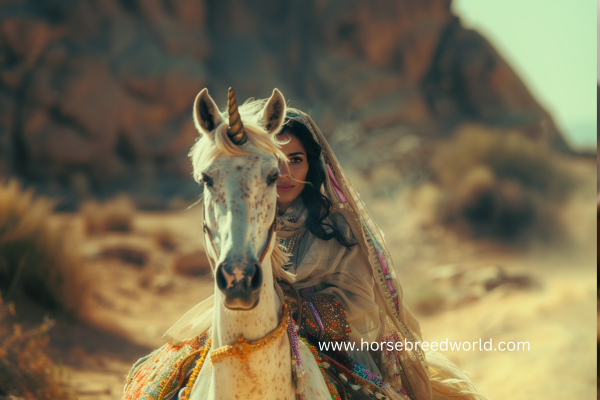Dangerous Horse Breeds
Horses are majestic, powerful, and often gentle creatures. However, some breeds are known for their high energy, strength, or unpredictable temperaments, making them dangerous for inexperienced handlers or riders. Whether due to their sheer size, spirited nature, or wild instincts, these breeds demand skill, respect, and understanding. In this post, we’ll discuss the top 4 most dangerous horse breeds, why they can pose a challenge, and how to handle them safely.
Table of Contents
ToggleWhat Makes a Horse Breed Dangerous?
Horses can become dangerous for a variety of reasons, but it usually boils down to three main factors: temperament, physical strength, and handler experience. While horses are not inherently aggressive animals, they are large and powerful, and when combined with fiery energy or unpredictable behavior, accidents can happen.
Temperament is key. Some breeds are classified as “hot-blooded,” meaning they are more energetic, sensitive, and reactive. While this makes them excellent for racing or endurance, it can also make them difficult to manage. Breeds like Arabians and Thoroughbreds are prime examples of hot-blooded horses.
Another factor is size and strength. Breeds like Clydesdales or Percherons, which are massive draft horses, can unintentionally cause harm simply due to their weight and power. A startled 2,000-pound horse can be far more dangerous than an aggressive small one.
Finally, human error plays a significant role. Horses require proper training, care, and experienced handlers. A spirited horse paired with a novice rider can be a recipe for disaster. Knowing the potential risks and understanding a breed’s specific needs are essential for safety and success.
Akhal-Teke: The Hot-Blooded Athlete
The Akhal-Teke is a stunning and unique breed, known for its slender build and metallic sheen. Originating from Turkmenistan, this breed was historically used as a warhorse, prized for its speed, stamina, and loyalty. However, its fiery, independent temperament makes it a challenge for inexperienced riders.
Akhal-Tekes are “hot-blooded” horses, meaning they are incredibly energetic and sensitive to their environment. While they are loyal to a trusted owner, they can become reactive and skittish around strangers or in unfamiliar situations. A sudden noise or movement might trigger a startled reaction, which can be dangerous if the handler isn’t prepared.
Another factor that adds to their reputation is their intelligence and stubbornness. Akhal-Tekes require consistent, firm, but gentle training. If they sense indecisiveness in a handler, they may refuse to cooperate or act out.
Their speed and athleticism are also worth noting. While these traits make them excellent for endurance riding and racing, they can make them hard to control at high speeds. Novice riders may struggle to keep up with their energy, increasing the risk of falls or accidents.
To safely handle an Akhal-Teke, patience and experience are key. For seasoned riders, this breed can be an absolute joy, but for beginners, it’s a challenge that might be best avoided.
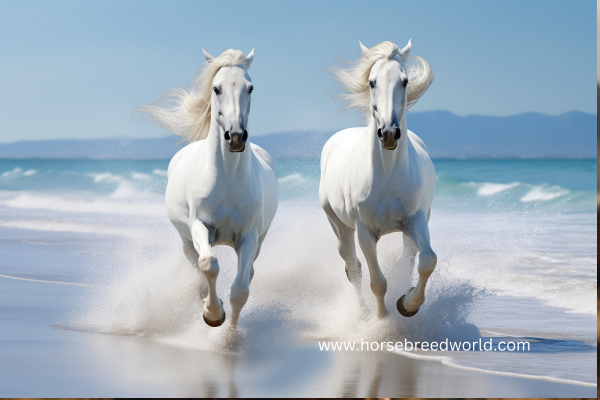
Arabian Horse: Beauty with an Edge
The Arabian horse Known for its arched neck, dished face, and high tail carriage, the Arabian is a picture of elegance and grace. However, this beauty comes with an edge. Arabians are high-spirited, intelligent, and sensitive—traits that can make them difficult for inexperienced handlers.
Arabians are naturally energetic and love to move. They were bred for endurance in the harsh deserts of the Middle East, and as a result, they have endless stamina. While this makes them exceptional in endurance sports, it also means they require constant exercise and mental stimulation. Without it, they can become restless and unpredictable.
Arabians quickly pick up on a handler’s confidence—or lack thereof. If they sense nervousness, they may test their limits, refusing commands or even acting out.
Additionally, Arabians are sensitive to external stimuli, such as loud noises, sudden movements, or unfamiliar environments. They can become spooked easily, leading to dangerous situations if a rider or handler is caught off guard.
For experienced riders who can match their energy and confidence, Arabians are loyal and responsive partners. However, they are not ideal for beginners who may struggle to keep up with their spirited nature.
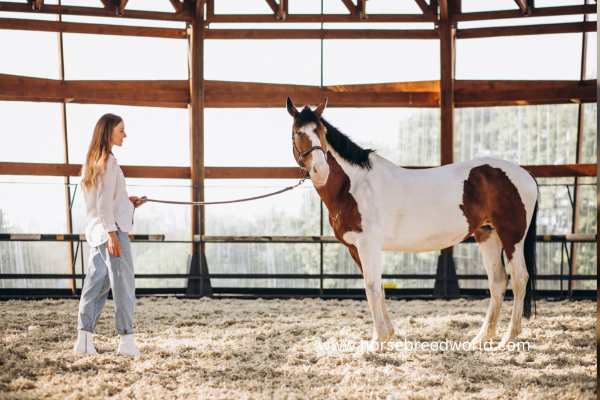
Thoroughbred: The Racing Powerhouse
The Thoroughbred is synonymous with speed and racing. Bred for competitive horse racing, this breed is incredibly athletic, strong, and energetic. However, their fiery temperament and immense power can make them dangerous in the wrong hands.
Thoroughbreds are another “hot-blooded” breed, meaning they have a high-energy personality and are easily excitable. They thrive on speed and adrenaline, which can make them difficult to control outside of a racing environment. Riders who are not prepared for their strength and quick movements can easily find themselves in over their heads.
One of the reasons Thoroughbreds are considered dangerous is their sensitivity. They react quickly to commands, but they can also overreact to unexpected situations, like sudden noises or changes in terrain. This makes them prone to bolting or becoming spooked, especially with inexperienced riders.
Thoroughbreds also require a lot of exercise and mental engagement. If they are not given proper outlets for their energy, they can develop behavioral issues such as kicking, rearing, or refusing commands. This is especially true for retired racehorses who may not adapt easily to life outside the track.
For experienced equestrians, the Thoroughbred is a dream horse—fast, intelligent, and athletic. However, their speed and sensitivity make them a risky choice for beginners.
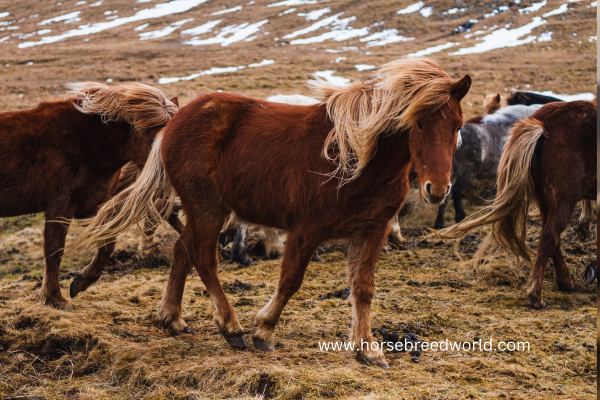
Mustang: The Wild and Free Spirit
The Mustang is a symbol of freedom and strength, embodying the wild spirit of North America. Mustangs are feral horses, descended from domesticated breeds brought over by Spanish explorers. While their beauty and resilience are unmatched, their wild instincts can make them unpredictable and dangerous.
Mustangs are known for their independence and survival instincts. In the wild, they rely on quick reactions to escape predators, and these instincts remain even after they are captured and domesticated. This makes them prone to spooking, bolting, or resisting human interaction.
Taming a Mustang requires time, patience, and expertise. They do not respond well to harsh training methods and can become distrustful or aggressive if handled improperly. Unlike domesticated breeds, Mustangs have not been selectively bred for calm temperaments, so their behavior can vary widely.
Physically, Mustangs are strong and sturdy, built to survive harsh conditions. While this makes them excellent working horses, it also means they can overpower inexperienced handlers. A frightened or frustrated Mustang can kick, rear, or charge, posing a risk to those unprepared for their strength.
For skilled trainers, Mustangs can become loyal and hardworking partners. However, they are not ideal for beginners and require a deep understanding of horse behavior to manage safely.
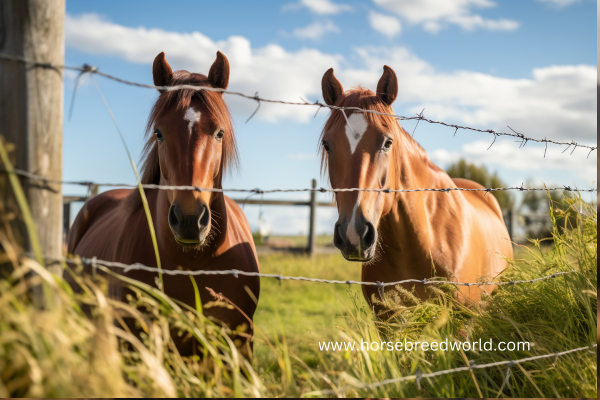
Conclusion: Safety Tips for Handling Dangerous Horse Breeds
While horses are incredible companions, certain breeds come with challenges that require experience, patience, and respect. Whether it’s the fiery Arabian, the powerful Thoroughbred, or the wild Mustang, these horses demand skilled handling and consistent training. Always prioritize safety, wear proper gear, and seek professional guidance when working with spirited or strong horses.
If you’re an experienced equestrian, these breeds can be rewarding partners, but for beginners, it’s essential to match your skill level with the right horse.
Want to learn more about horses and other fascinating animals? Check out our other posts on www.horsebreedworld.com for more engaging, informative, and fun content!

